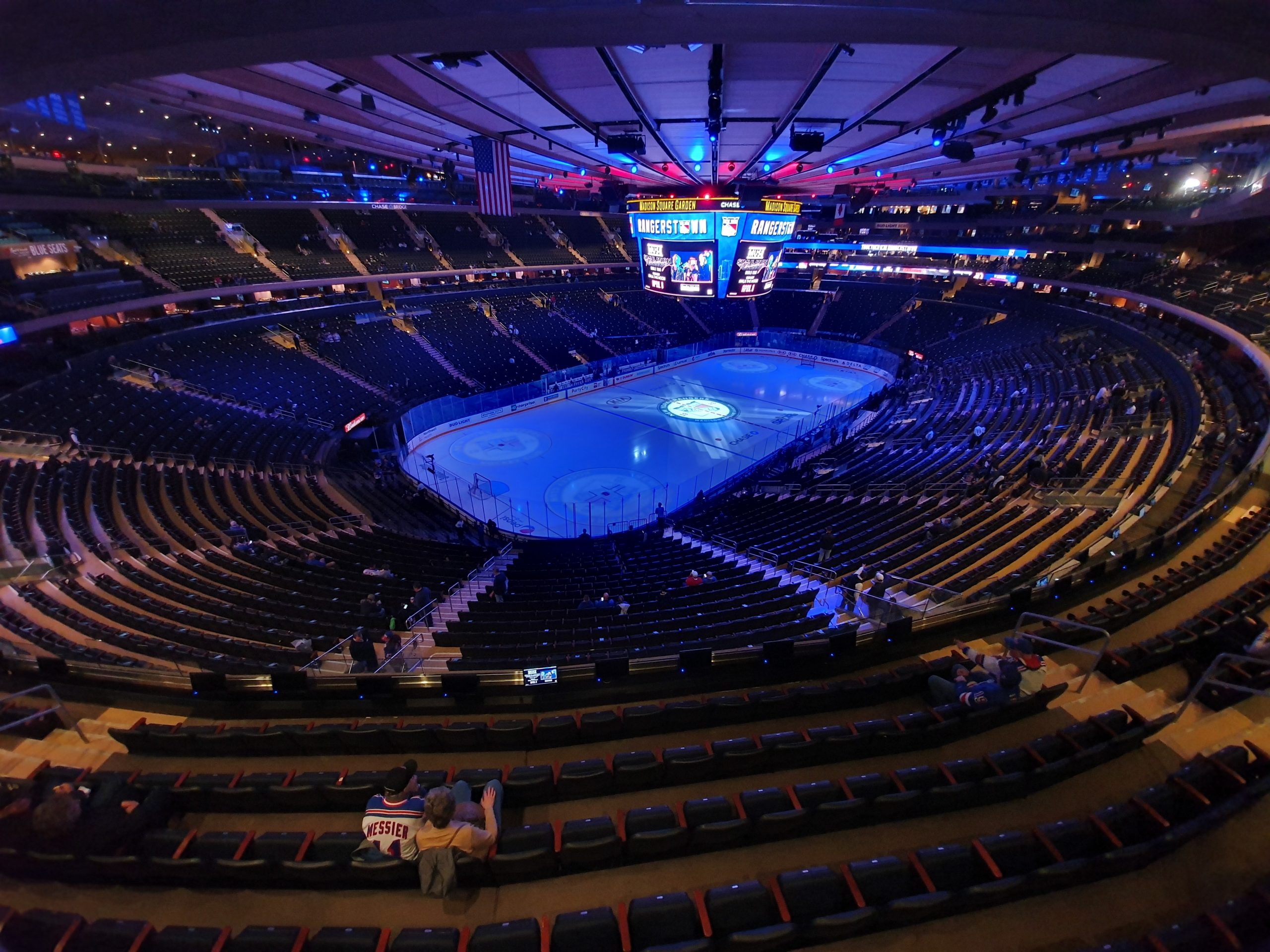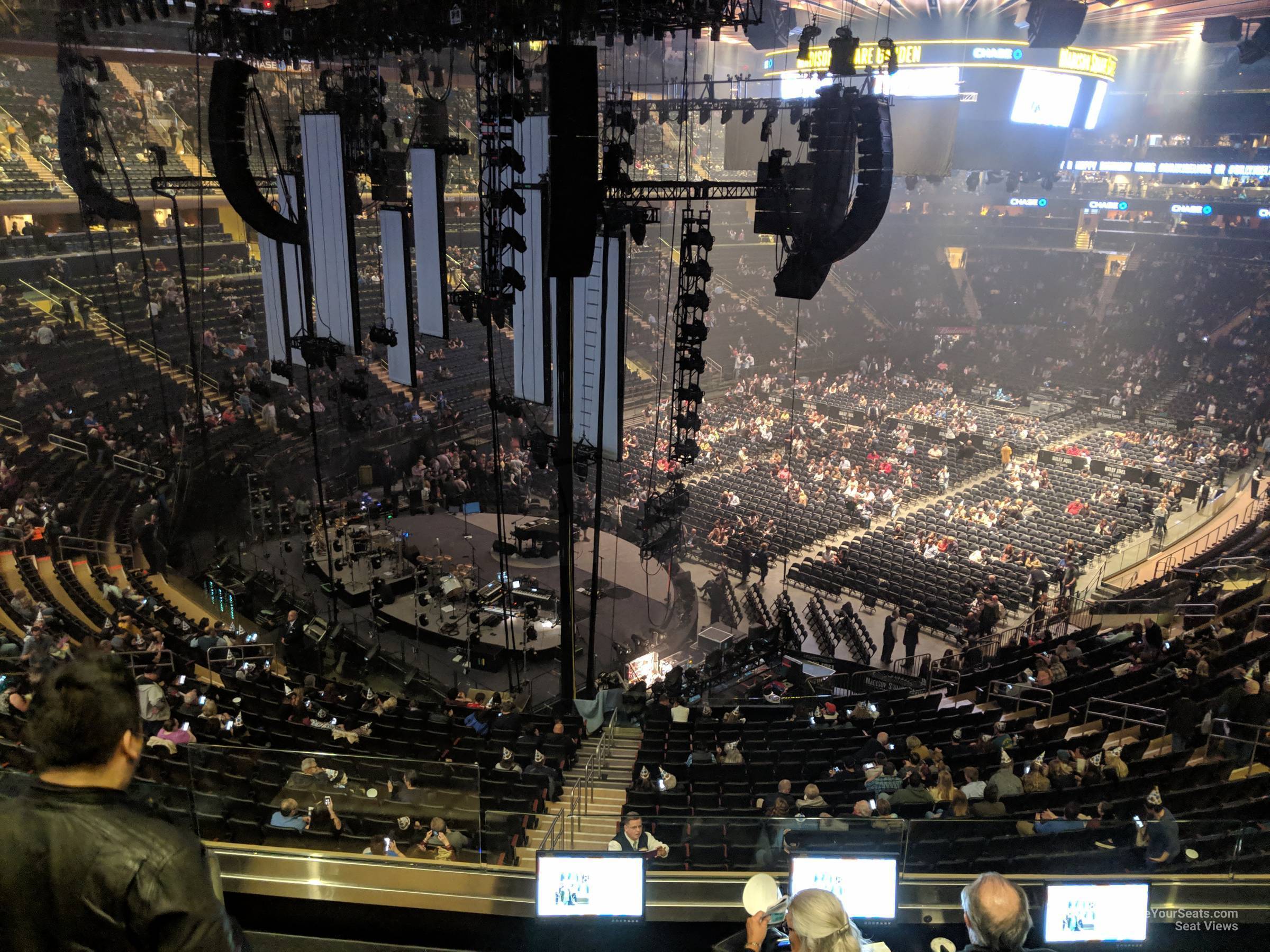What is the true measure of a venue's stature? While accolades and legendary performances undoubtedly play a role, the sheer ability to accommodate thousands of fans, artists, and athletes is a critical factor. And when it comes to sheer scale and storied history, few arenas in the world can rival Madison Square Garden.
Madison Square Garden, more than just a building, is an enduring symbol of New York City's relentless pursuit of excellence in entertainment and sport. Its doors opened in 1968, and since then, "The Garden" has served as the backdrop for countless moments etched in the collective memory of sports fans and music lovers alike. Whether you're planning a visit, a seasoned attendee, or simply a curious enthusiast, understanding the physical dimensions and capabilities of this iconic venue is paramount.
Let's take a deep dive into the specifics of this legendary arena. From its seating arrangements to the diverse events it hosts, we'll uncover the details that make Madison Square Garden a must-visit destination for fans from all walks of life.
| Category | Details |
|---|---|
| Name | Madison Square Garden |
| Location | 4 Pennsylvania Plaza, New York, NY 10001, United States |
| Opened | February 11, 1968 (Current Venue) |
| Owner | Madison Square Garden Entertainment |
| Operator | Madison Square Garden Entertainment |
| Tenants | New York Knicks (NBA), New York Rangers (NHL) |
| Previous Names | Fourth Madison Square Garden (MSG IV) |
| Construction Cost | $123 million (USD, equivalent to about $1 billion today) |
| Architects | Charles Luckman Associates |
| Seating Capacity (Basketball) | 19,812 |
| Seating Capacity (Hockey) | 18,200 |
| Seating Capacity (Concerts) | Up to 20,000 |
| Surface | Varies depending on the event: wood for basketball, ice for hockey |
| Website | https://www.msg.com/ |
Madison Square Garden boasts a rich and compelling history that began in the late 19th century. The arena currently standing at Penn Station is actually the fourth incarnation of a venue bearing the name. The first Madison Square Garden, a multi-purpose complex, welcomed visitors in 1879. It was followed by two more distinct venues before the present iteration was constructed in 1968. Each version has contributed to the city's vibrant entertainment scene.
Its location, nestled above Penn Station, positions it at the very heart of New York City's transportation network, making it an easily accessible hub for entertainment and sports. Over the decades, "The Garden" has undergone several renovations and upgrades. These improvements ensure the venue remains a premier destination capable of hosting world-class events while incorporating the latest technological advancements.
The question of how many people can be accommodated at Madison Square Garden is more complex than a simple number. The answer varies greatly depending on the nature of the event. For a New York Knicks basketball game, for example, the arena can seat approximately 19,812 spectators. The layout for hockey, the domain of the New York Rangers, results in a slightly lower capacity, usually around 18,200 seats, due to the required rink dimensions.
When the configuration shifts to concerts and other large-scale performances, the venue has the flexibility to increase its capacity, often accommodating close to 20,000 attendees. This adaptability is one of the hallmarks of Madison Square Garden. It allows the venue to host a diverse array of events and maintain a comfortable, intimate atmosphere for those in attendance.
Key Factors Influencing Seating Capacity
- Event Type: Different sporting events, concerts, and shows require distinct layouts, resulting in changes to the overall seating available.
- Stage Size and Setup: Concerts often utilize large stages and require space for equipment, reducing the number of available seats.
- VIP Sections and Luxury Seating: The integration of luxury boxes, club seats, and other premium areas can also impact the overall seating capacity by taking up space.
One of the defining characteristics of Madison Square Garden is its incredible versatility. The venue can be reconfigured to provide optimal experiences for a wide range of events. Below are some of the most common configurations you'll find.
Basketball Games
The seating layout for basketball games is designed to offer excellent views of the court from every vantage point. The lower levels provide fans with a close-up view of the action, while the upper decks provide panoramic perspectives of the entire court.
Hockey Games
Hockey games involve a distinct setup. The presence of the ice rink means careful adjustment is required to maximize fan visibility. Seats are arranged to give fans unobstructed views of the ice, creating an exciting and immersive atmosphere.
Concerts
Concert configurations are tailored to prioritize stage visibility and audio quality. Seats may be removed or rearranged to create standing areas, which adds to the immersive experience for concertgoers, as well as for those preferring a seated experience. The placement of the stage and speakers is carefully considered to deliver the best possible sound.
Madison Square Gardens prominence in the world of sports is undeniable. It's home to the New York Knicks of the NBA and the New York Rangers of the NHL. The arena has witnessed countless championship victories and legendary performances by athletes of all kinds. Iconic moments in both basketball and hockey history have been played out within its walls.
However, the sports roster extends beyond basketball and hockey. The venue frequently hosts boxing matches, wrestling events, and other major sporting competitions. Its reputation as a "mecca" of sports consistently attracts top-tier athletes and passionate fans from all over the globe.
Beyond sports, Madison Square Garden is a premier destination for live music and various other forms of entertainment. Countless iconic artists and bands have graced its stage, creating unforgettable memories for those in attendance. The arena is equipped with state-of-the-art sound and lighting systems that enhance the concert experience, making it a favorite among performers and fans alike.
The diversity of performances at Madison Square Garden is truly remarkable. From electrifying rock concerts to classical music performances, the venue caters to a wide range of tastes, ensuring that there's something for everyone.
For those seeking an elevated experience, Madison Square Garden offers a selection of VIP and luxury seating options. These options are designed to provide unparalleled comfort, exclusivity, and premium amenities. They include:
- Luxury Boxes: Private suites equipped with premium amenities, dedicated service, and exclusive access. These offer a private and upscale experience with the best views in the house.
- Club Seats: Seating areas with enhanced views, fine dining options, and personalized service. Club seats typically provide access to exclusive lounges, upscale dining and beverage service, and often, preferred parking.
- Elite Packages: These are customizable packages that provide unique experiences, which may include meet-and-greets with performers or athletes, private tours, and other exclusive perks.
Planning a visit to Madison Square Garden? Here are a few tips to help make the most of your experience:
- Arrive Early: Give yourself plenty of time to find your seat, navigate the venue, and enjoy pre-event activities. This allows you to soak in the atmosphere and avoid any last-minute rush.
- Check Event Guidelines: Before you go, familiarize yourself with any specific rules or restrictions for the event, such as bag policies, prohibited items, or dress codes.
- Utilize Public Transportation: Parking in the area surrounding Madison Square Garden can be very challenging and expensive, so consider using public transit to reach the venue. The arena is conveniently located near Penn Station, a major transportation hub.
- Explore Nearby Attractions: Take advantage of the vibrant neighborhood surrounding Madison Square Garden. There are numerous restaurants, bars, shops, and other attractions to explore before or after the event.
Madison Square Garden is a treasure trove of facts and statistics that highlight its significance as a venue of global renown:
- Year Opened (Current Venue): 1968
- Seating Capacity: Up to 20,000 for concerts and large events, varies for sports
- Approximate Number of Events Annually: 320
- Significant Historical Achievements: Hosted numerous championship games, iconic concerts, and other memorable events
Madison Square Garden is in a perpetual state of evolution, with ongoing plans for upgrades and improvements. Recent renovations have focused on improving accessibility, integrating new technologies, and overall guest experiences. Future developments are aimed at maintaining the arena's status as a world-class venue while incorporating innovative features that further enhance the visitor experience.
Investments in sustainability and energy efficiency are also part of the future plan, ensuring Madison Square Garden remains a leader in environmentally responsible entertainment venues. This reflects a commitment to reducing its environmental impact and providing a sustainable venue for future generations.
- How To Make 3 4 Cup
- Tini Texie
- Chris Pannullo
- %D8%A2%D9%86%D8%A7 %D8%B1%D9%8A%D8%B2%D9%8A%D9%86%D8%AF
- Jessica Ditzel


